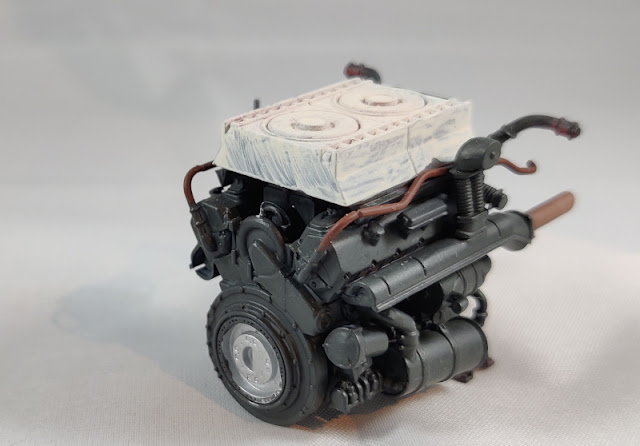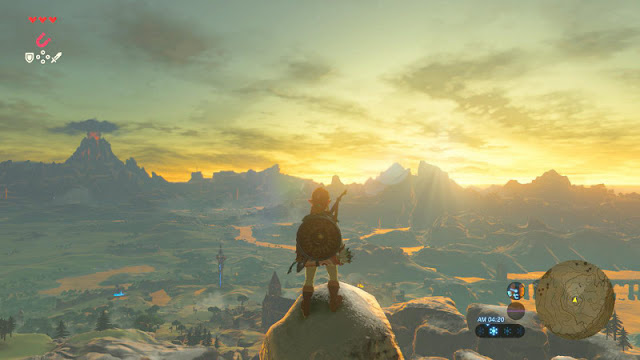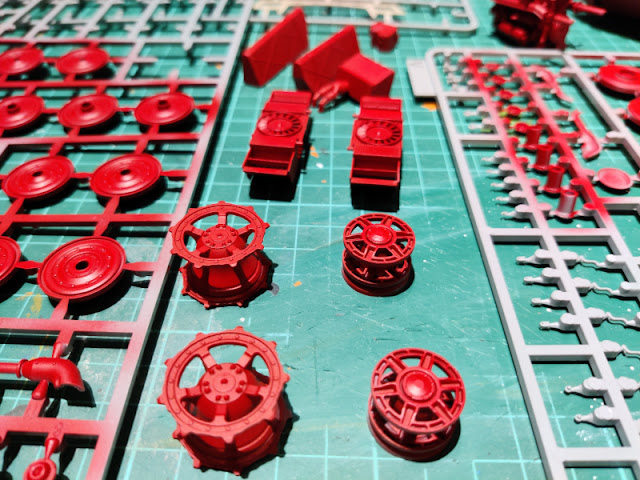The motor into its slot
Squeezing this massive block into this narrow place was a bit stressful. First of all the side plates were (of course) a bit misaligned, so not all of the motor's pipes found their attachment holes. Another reason for this was that the motor itself was a bit askew (see my previous complaint about the V-angle's tightness). A couple of flimsy pipes also pointed "about that way", but those I managed to force into place.
I was exitedly installing the next two dozen bits, when I noticed that my earlier priming rounds had managed to skip a couple of important bits that just didn't catch my eye in time. Pressing forward I installed the shelves that went between the motor's walls and the hull to improve the sturdiness of the assembly. After the glue dried I painted them by hand. While I was on it I also prepainted the first outside-the-engine pipes (I assumed they were cooling-related, being such large-diamater rubber pipes).
Let the pipe circus begin
Once-pained pipes didn't want to settle into their places. The one on the right in the photo was easier, even though the upper end was pretty complicatedly located behind a couple of earlier installed pipes. The leftmost pipe was almost off from the upper end (thanks to the installation tolerances of the wall plate), and pretty difficult to get into place with the motor's own pipes playing spaghetti nearby.
The pipe complex that lived around the outer edge of the motor slipped in quite nicely. Again I first glued the left side first, and allowed it cure for a while before pressing the right side in. This was yet another time when Iwas swearing about ambigous attachment points.
In the following two photos the bits and pieces were installed, but with incomplete painting. Obviously I wasn't going to leave anything here as bright red.


















































